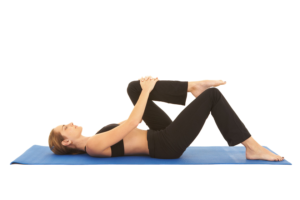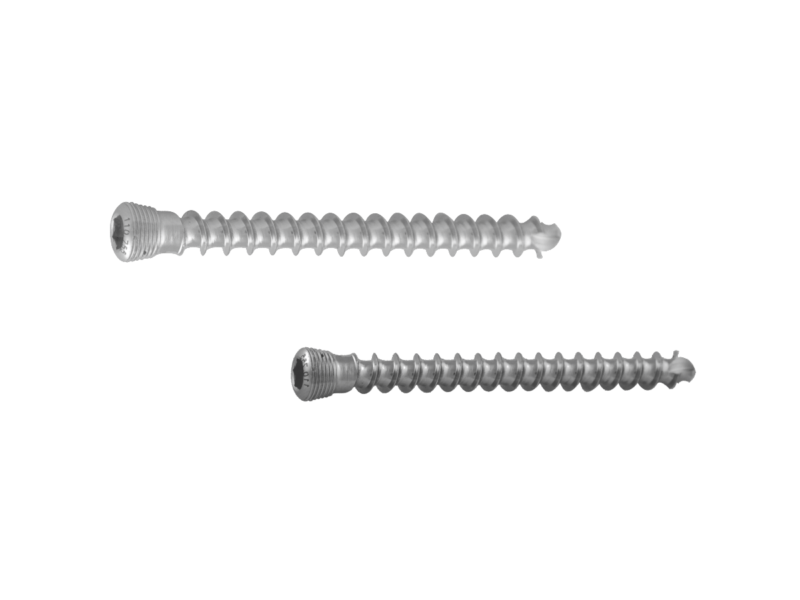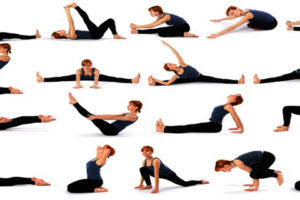Bone screws are a basic part of modern internal fixation and can be used independently or in combination with specific types of orthopaedic implant. The common design consists of a shaft, tip, head, and thread. A round screw tip needs pretapping whereas a fluted tip is self-tapping. The shaft of the screw is located between the head and the threaded portion of the screw. The screw thread is well-defined by the following variables:
- Major or outside thread diameter
- Minor or root shaft diameter
- Pitch
- Lead
- Number of threads
- The root diameter determines the resistance of screw to breakage (tensile strength). Screws are referred to by their outer thread diameters, bone type for the intended use (cancellous or cortical, determined by a pitch and major/minor diameters), and proportion of thread (fully or partially threaded).
- Pitch, the distance between adjacent threads, affects purchase strength in bone. Increasing the pitch decreases bone material between the threads but decreases the no. of threads per unit of distance. The lead is the screw’s distance advances with a complete turn. Lead is the same as pitch if the screw is single threaded, and lead is twice the pitch the orthopedic bone screw is double-threaded (faster insertion of the screw).
- Screw pullout strength can be affected by many factors. Bone composition (density) is the main determinant of screw fixation. The total surface area of thread contacts to bone (root area) is another aspect of pullout resistance.
- Pretapping is the screw hole theoretically reduces microfracture at the thread-bone interface but needs an extra step for insertion. Self-tapping screws have no clinical difference from pretaped screws for plate fixation or fracture, eliminate the tapping step, and are now the industry standard. Because the fluted portion of the screw tip has less thread contact with the bone, the minor protrusion at the opposite cortex is recommended.
- The industry standard for the screw head is a hexagonal recess, which provides a large contact surface between the screwdriver and the screw head as well as allows for the optimal transmission of torque. A cross-type screw head is used on some screws in the 2.0 and mini fragment sets. The star design (or Torx) found in the industry has been adapted to the screw heads for the Association for the Study of Internal Fixation (AO/AISF) locking plates and has been shown superior for resistance to stripping and torque.
Many forces are involved with the insertion of screw and tightening. Torque is applied through the screwdriver to the screw head in a clockwise rotation to advance the screw in the predrilled path or, in the case of a cannulated screw, over a guide wire; this development produces a circumferential force along the thread. For cortical screws, the drill diameter is a little larger than the root (shaft)) diameter of the screw. Axial tension is created with impingement of the screw head on the plate or cortex, generating tension through the screw. To optimize these forces, screws should in an ideal sense inserted at 80% of the torque needed to cause them to strip. Approximately 2500-3000 newtons of axial compression force can be applied to the average screw.
Over time, the amount of compressive force declines slowly as the living bone remodels to the stress; however, the fracture healing time is usually shorter than the time it takes for substantial loss of compression and fixation.
Two basic kinds of screws are available for use in the bone of differing density:
Cortical screws indicated for compact diaphyseal bone, Cancellous screws indicated for the more trabecular metaphyseal bone, which is softer.














